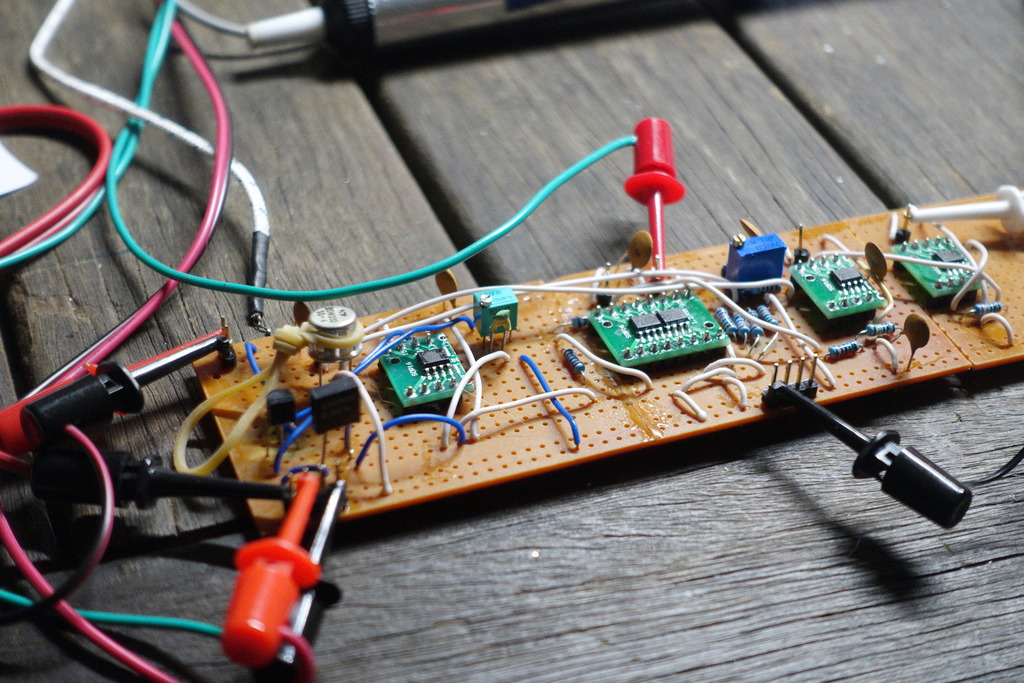Messing around with sub-surface zeners (part 1)
The 2dw232 features a pair of buried zener diodes implemented in a back-to-back configuration on a single silicon substrate. The component is reported to have low noise, balanced tempco and high-stability - useful properties when it comes to creating precision voltage-references. However, to take advantage of the desirable properities requires some circuit complexity.
Prototype circuit
The prototype design includes the following features,
-
incorporates precision current adjustment so that the tempco (temperature coefficient) of the two zeners may be balanced against each other
-
uses the voltage drop of both the reverse biased and forward biased zeners to create the reference. This results in a higher current configuration (~20mA) with lower noise output.
-
uses a subtracting op-amp to extract the voltage drop across the forward-biased zener from the reference-output for use as an on-die temperature sensor (2mV ~= 1C)
-
implements a propotional-integral control loop in response to the on-die temperature sense.
-
has an adjustable operational temperature setpoint (via a trimpot)
-
uses a 200ohm resistor bonded to the case of zener for heater stabilization
Adding heater regulation to the 2dw232
The heater is a simply a 200ohm resistor bonded with epoxy to the underside of the 2dw232 case. It looks like this,
Initial test data
Plot showing the on-die temperature sense voltage (lower voltage is higher temp) together with the case temperature measured with a k-type thermocouple over time. At startup, the zener current and heater heat the component, which is shown by the on-die temp-sense voltage falling and case temperature increasing. Both variables then stabilize as regulation takes control.
When the heater is disabled, the component runs at around 40C due to the ~=20mA zener current alone depending upon ambient conditions. The current temperature setpoint of 55C provides around 15C of headroom for regulation.
The measurement interval is 10 seconds.
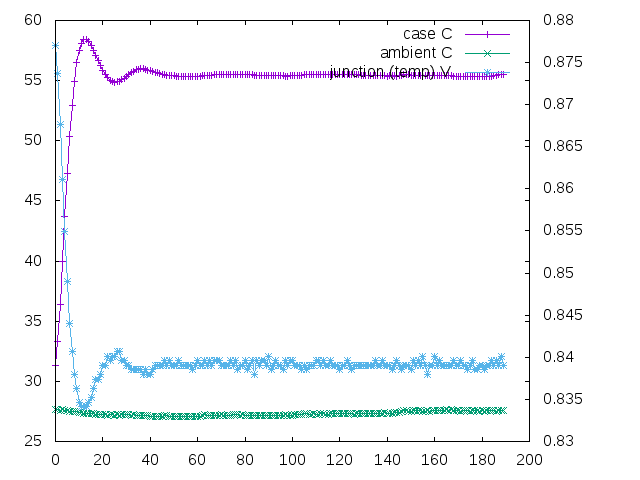
A plot of the on-die junction temperature voltage and heater voltage. The control loop regulates the heater temperature in response to the junction temperature by increasing or decreasing voltage to the heater in order to stabilize the on-die temperature.
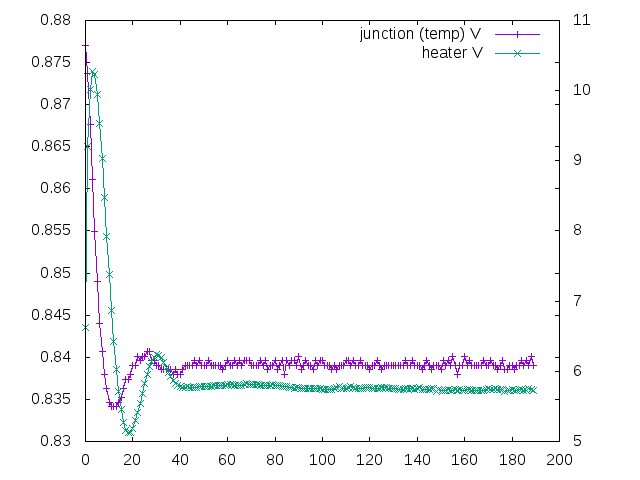
Plot of the output-reference voltage and on-die temperature showing significant correlation. This is bad and indicates that the tempco of the forward and reverse biased diodes are not in balance. Despite this it appears that the reference output shows stability to within 100uV.
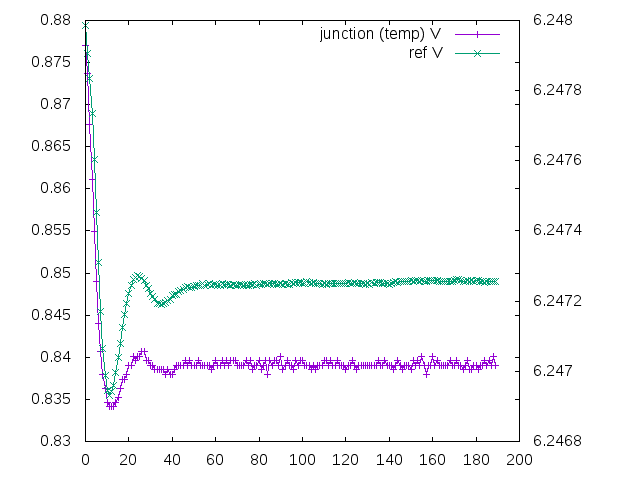
Same as the previous plot, except the output-reference voltage is plotted directly against on-die temperature. The current with maximum temperature stability will be somewhere off to the right - such that the top of the parabola co-incides with the set-point temperature
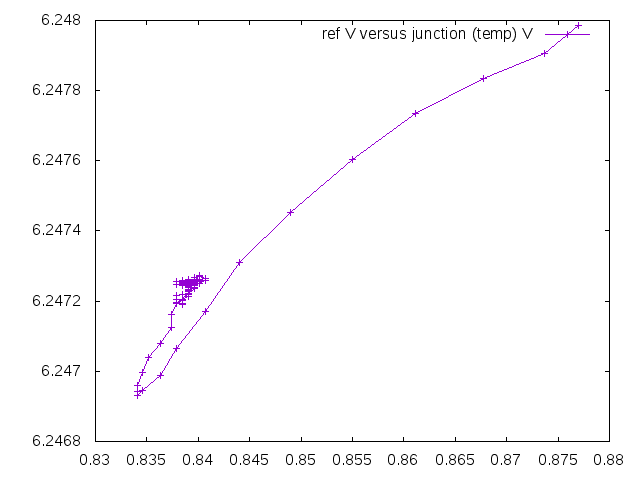
Issues/ development,
-
The initial circuit attempt, was a four op-amp design - involving summing the inverted full ref-voltage drop, reverse-biased zener drop and temperature set-point voltage, and feeding the result to the integrating op-amp, and inverting again for the heater voltage
-
Now using three op-amps, involving inverting and summing, and then comparing the temp sense voltatge with temp set-point voltage, and with the integration done on the same op-amp as the comparison. The advantages are - fewer components and the on-die temperature sense voltage is always available to be read - by a microcontroller for instance.
-
First attempt at a heater used a resistor bonded to the top of the 2dw232. However there is a lot more latent heat involved - compared with placing the heating element on the case bottom in closer proximity to the internal die. This made it very difficult to work out the parameters for the integration feedback
-
The feedback loop is quite slow. Had to keep incresing the integration cap until it would stop oscillating and stabilize.
